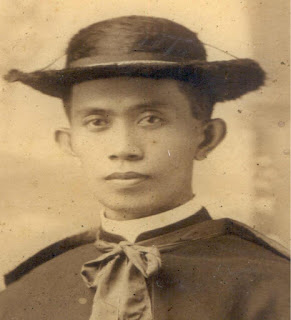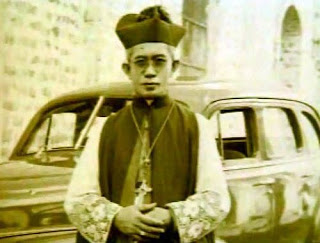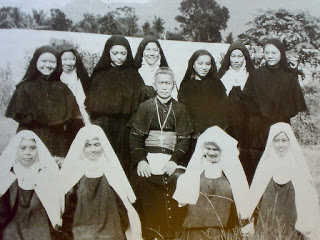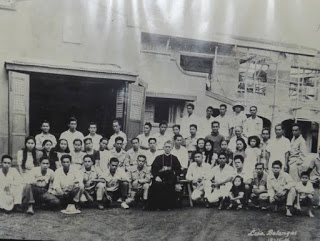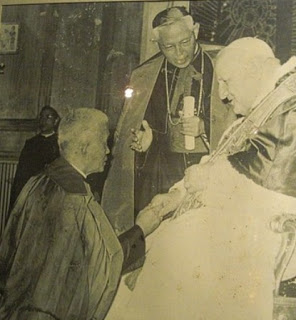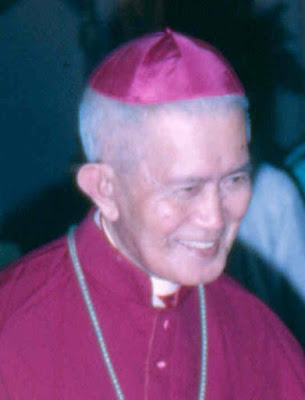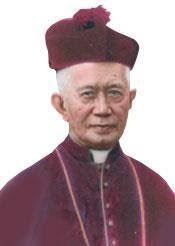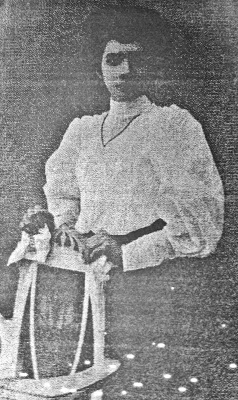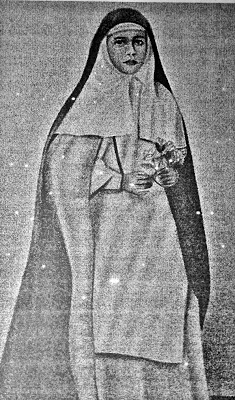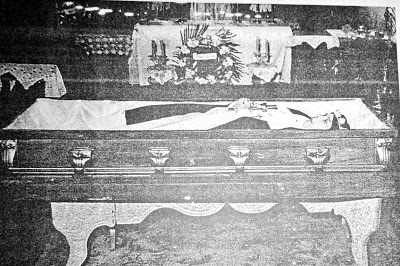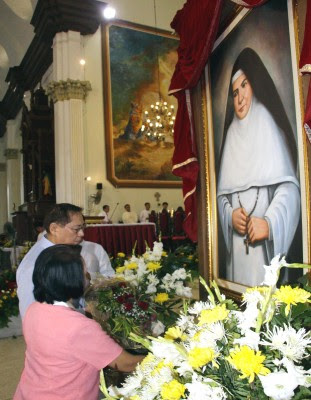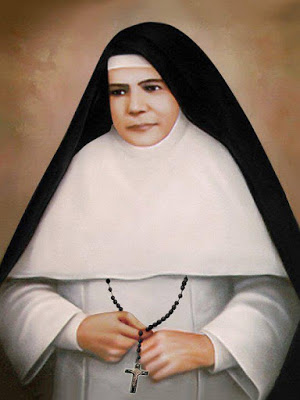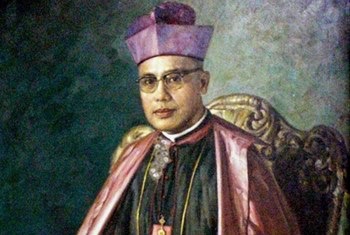
Cebu, is known as the birthplace of the Catholic Faith in the Philippines where the faith was so alive and colorful since the Spanish era. It is in Cebu where the famed and canonically crowned images of Santo Niño de Cebu, the Virgen de la Regla, and Virgen de Guadalupe of Cebu are enshrined and the birthplace of our second Filipino Saint – St. Pedro Calungsod.
In recent years, local and national news outlets report the sanctity of one of Cebu’s illustrious prelates that gained much publicity and fame – the Venerable Archbishop Teofilo Camomot. Let us get to know more about this Holy Bishop from the Visayas and discover how he became beloved by his flock and holy life led to his cause for sainthood.

Early Life
Archbishop Teofilo Camomot was born on March 3, 1914, in Barangay Cogon, Carcar, Cebu, to Luis Camomot and Angela Bastida. He was baptized the following day, and on August 22, 1915, he received the Sacrament of Confirmation.
At an early age, Teofilo was already exposed to a very religious environment. He spent his elementary years at Carcar Elementary School where he was fondly called “Lolong” by his classmates, friends, and relatives. After graduating from elementary, Lolong decided to help his father on the farm and dreamt of being an agriculturist, which his mother disapproved of. Even at a young age, he already showed signs of love and concern for the poor, asking his mother for some rice or food so that he can give to the farmers and poor people. Once when his elder brother, Fr. Diosdado, visited and saw that he was not attending school, he asked him if he wanted to enter the seminary.
Answering the call
Camomot entered the Seminario Menor de San Carlos in Mabolo, Cebu City, for his secondary education from 1932 to 1933, pursuing his philosophical and theological studies at the Seminario Mayor de San Carlos. He was ordained a priest on 14 December 1941, celebrating his Cantamisa (first Mass of a newly ordained priest) on the second floor of his home instead of his parish in Carcar because of the outbreak of the Second World War.
For twelve years, he served as the parish priest of Santa Teresa de Ávila Parish in Talisay. In 1955, the Third Order of Carmelites Discalced (now the Secular Order of Discalced Carmelites) was established at the Carmelite Monastery in Barangay Mabolo, Cebu City, and he was elected as the first prior of the San Elías Chapter.
As a Shepherd of a flock

On 25 March 25, 1955, Feast of the Annunciation, Fr. Camomot was appointed auxiliary bishop of Jaro, Iloilo, receiving episcopal ordination on May 29, 1955, and staying in Jaro until 1959. After Masses, he kept himself busy by visiting the poor, especially those who are sick. In 1959, he was sent to the Archdiocese of Cagayan de Oro as coadjutor archbishop with the right of succession. During these years, he formed communities that would help the Church in the work of evangelization: the Paulinian Faith Defenders and the Carmelite Tertiaries of the Blessed Eucharist, the forerunners of the Daughters of Saint Teresa.
Between 1962 and 1965, he attended the first (October 11, 1962 – December 8, 1962), third (September 14, 1964 – November 21, 1964), and fourth (September 14, 1965 – December 8, 1965) sessions of the Second Vatican Council. During the Second Vatican Council, he was one of the participants for which he had to endure traveling by sea from the Philippines to Rome in the fourth class of a luxury liner. Even though he was in Europe, his generosity especially to the poor, and his simplicity were observed by those around him.
Due to kidney problems, he resigned his position as coadjutor archbishop in 1970. He came back to Cebu and was assigned in Santo Tomás de Villanueva Parish in Barangay El Pardo, Cebu City. Together with him were some sisters from the congregation he founded in Mindanao. From Pardo, he was assigned to his native town in Carcar in the year 1976. Aside from being the pastor of the parish, he was also auxiliary bishop to Julio Cardinal Rosales. Again, his generosity became very well known that rectory workers began complaining about the number of poor people lining up to ask for food. His brothers and sisters would even remind him to be more cautious of the people whom he was helping because his generosity might be abused, but he always saw the goodness in every person he met.

Archbishop Lolong’s ministry
Archbishop Camomot was not much of an eloquent preacher or a convincing speaker, but his actions spoke louder than words. He was noted for his diligence in his pastoral duties (spending hours in the Confessional), devotion to prayer (waking up very early for his morning prayers and meditation), as well as his numerous works of charity. His parishioners until now cannot forget his simplicity, his personal holiness, and his apostolic works, especially among the poor, the sick, the homeless, and the suffering. His simplicity was attested by so many people even fellow prelates. There were many stories about the Archbishop’s Franciscan-like poverty. Cardinal Vidal has once told that on one occasion he noticed that Archbishop Camomot was not wearing his pectoral cross, the cross that a bishop wears on his breast. Curious, he asked Monsignor Camomot about it. He made some excuse. Later a priest told the Cardinal that the Archbishop had pawned his cross to give some money to the poor. The Cardinal later gave him a new cross and told him not to give it away.
He was also known for his spiritual gifts of healing, reading hearts, levitation, and bilocation. Cebu archbishop emeritus Ricardo Jamin Vidal said there were several testimonies about Camomot’s bilocation or there were people who would see him present in two places at the same time. The archbishop has signed an affidavit in relation to a witness’ account on this phenomenon where Camomot was drowsing beside him at a meeting of the College of Consultors. “I have already authenticated his presence at a meeting. But a woman said at that time he was in a mountain barangay (in Carcar) giving the last sacrament to a dying person,” he said. “He (Camomot) was at my left, and Archbishop (Manuel) Salvador– discussing the pastoral (thrust) of the diocese—at my right. I said ‘Monsignor, we have a votation and you have to vote,'” he added.

An unexpected end
On September 27, 1988, after celebrating the feast of Saint Vincent de Paul at the Seminario Mayor de San Carlos and visiting the Carmelite Monastery in Barangay Mabolo, Archbishop Camomot traveled home to Carcar with his chauffeur. While he was asleep, his vehicle overturned in Sitio Magtalisay, Barangay Sangat, San Fernando, Cebu. Camomot immediately died from his injuries at about 02:00 pm, but his chauffeur survived. Thousands were shocked by the news of his death and he was greatly mourned that thousands attended Archbishop Camomot’s funeral at the municipal cemetery. In 2009, his body was exhumed for transfer to the Daughters of Santa Teresa convent in Valladolid, Carcar City.
The cause for his sainthood

The Daughters of Saint Teresa formally petitioned for the opening of a cause for beatification and canonization. On October 15, 2010, Feast of St. Teresa of Avila, Cardinal Vidal announced that the Holy See has approved the opening of the cause for beatification and canonization. On December 27, 2010, Cardinal Vidal formed a commission to look into the possibility of beatification. After the Diocesan Phase, the Congregation for the Causes for Saints will have to certify the results. Then a Positio Super Vita et Virtutibus (On the Life and Virtues) will have to be written and submitted.
On May 21, 2022, Pope Francis, through the Congregation of the Causes of Saints, promulgated the decree of heroic virtues of the Servant of God Archbishop Teofilo naming him as Venerable.
His tomb behind the chapel of the DST Convent in Valladolid, Carcar City has become a pilgrimage site for devotees of Archbishop Camomot, who admire the example of his life and believe in the efficacy of his intercession. One of the most publicized miracles of Archbishop Lolong was the cure of a nun who had a serious eye disease who was suddenly cured when she laid on the bed of the Servant of God. The major dates of pilgrimage are on his birthday on March 3 and his death anniversary on 27 September 27. Near the tomb, a museum displays various items he had used in his lifetime.

Before we conclude this blogpost dedicated to Servant of God Teofilo Camomot, here is the official prayer to the Servant of God to ask for favors and for the advancement of the cause of his beatification and canonization
Almighty and ever-living God, it was Your grace and love of you that you made your servant, Teofilo Camomot devote his life to your service, as Priest and Bishop, a life of self-abnegation, constant prayer, and generous love for the poor and the needy. Grant that his virtues provide a lasting example for all and merit the approval of the Church that he be raised to the Altars.
As a sign of your benevolence to your servant’s cause, we humbly implore you to bestow upon us this favor (mention your request)
In the Name of Jesus, Our Lord, who lives and reigns with You and the Holy Spirit, God forever and ever. Amen.
Our Father … Hail Mary … Glory Be …
For favors received through Venerable Archbishop Teofilo Camomot, kindly inform or write to:
Daughters of Saint Teresa
Valladolid, Carcar City Cebu, 6019
Philippines
Telephone No.: +6332 487-9233
Mobile No.: +63 919-995-9350
References:
“Archbishop Teofilo Camomot Bastida”. catholic-hierarchy.org. Retrieved 16 April 2017.
“Archbishop Teofilo Camomot The Road to Sainthood”. cebudailynews.inquirer.net. Retrieved 16 April 2017.
“Archbishop Teofilo B. Camomot, D.D.” archbishopcamomot.ph. Retrieved 16 April 2017.
Mayol, Ador Vincent (3 January 2018). “Remains of Archbishop Camomot, candidate for sainthood, exhumed”. Inquirer.Net. Philippine Daily Inquirer. Retrieved 12 April 2019.
“Beatification of Archbp. Teofilo Camomot, D.D.” dst.ph. Retrieved 16 April 2017.
“Vatican opens cause for beatification of Archbishop Camomot of Carcar, Cebu”. lifestyle.inquirer.net. Retrieved April 16 2017.
Credits to the owners of the photos that were utilized for this blogpost dedicated to Servant of God Archbishop Teofilo Camomot.
+AM+DG+


